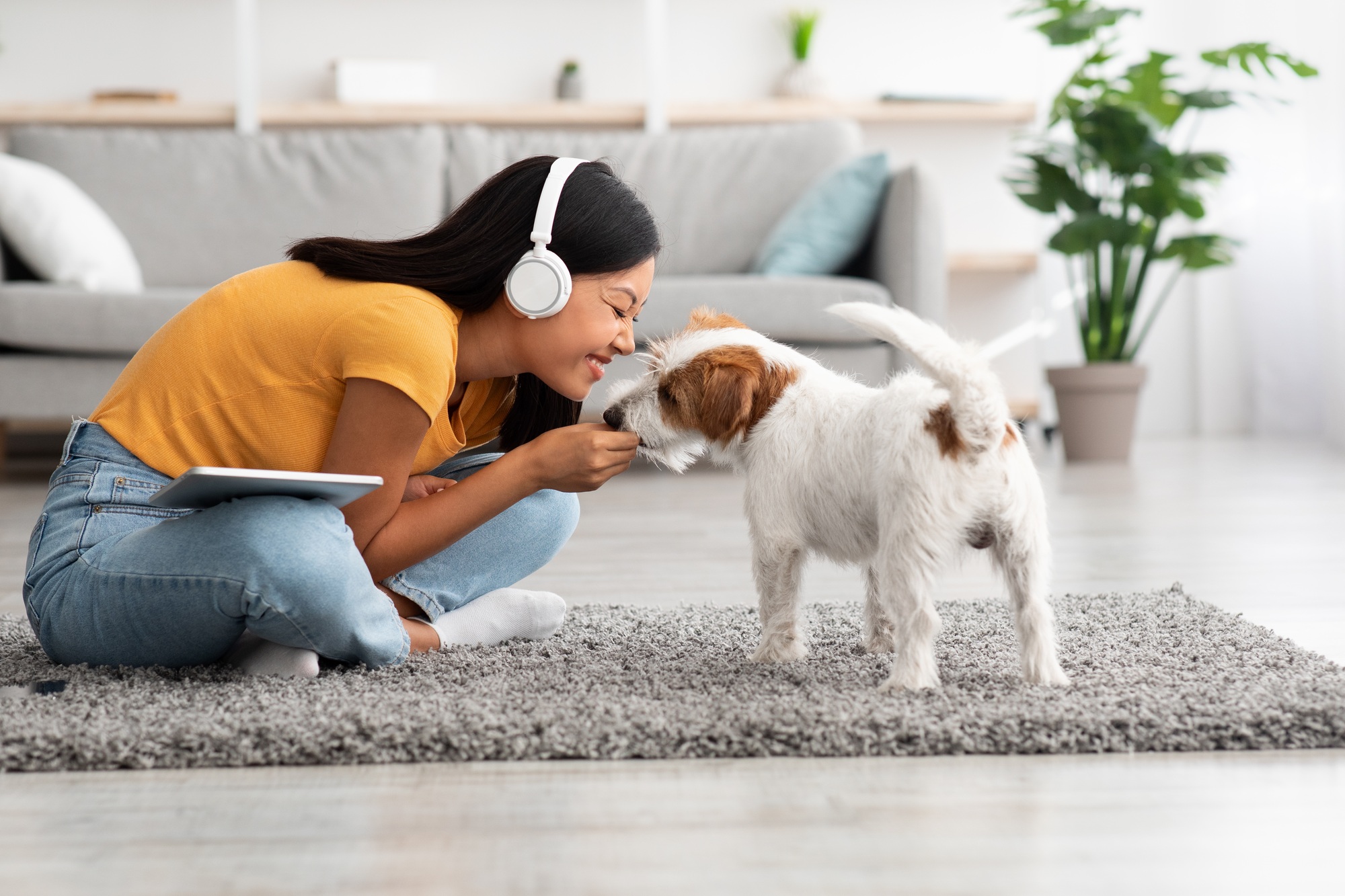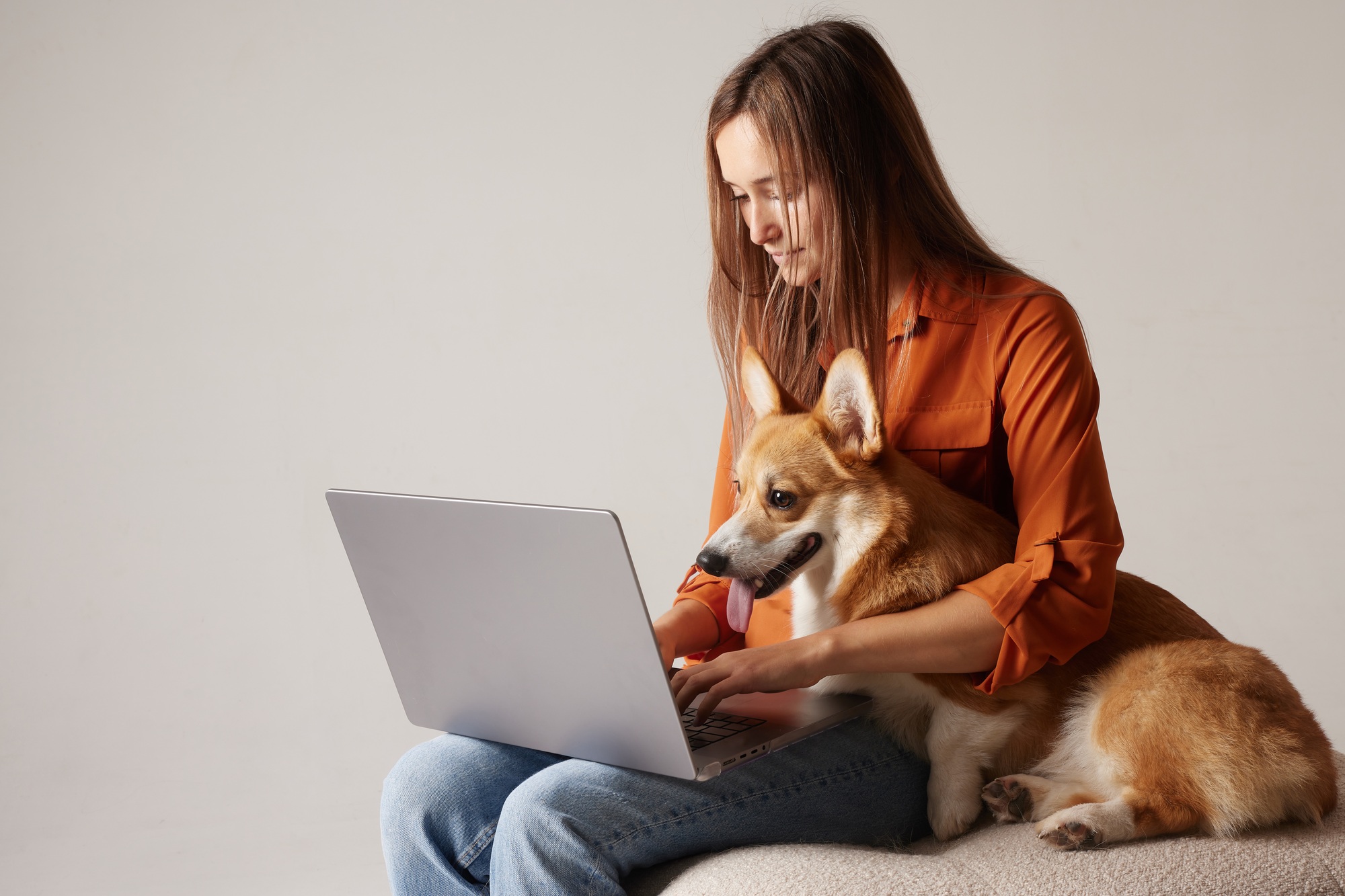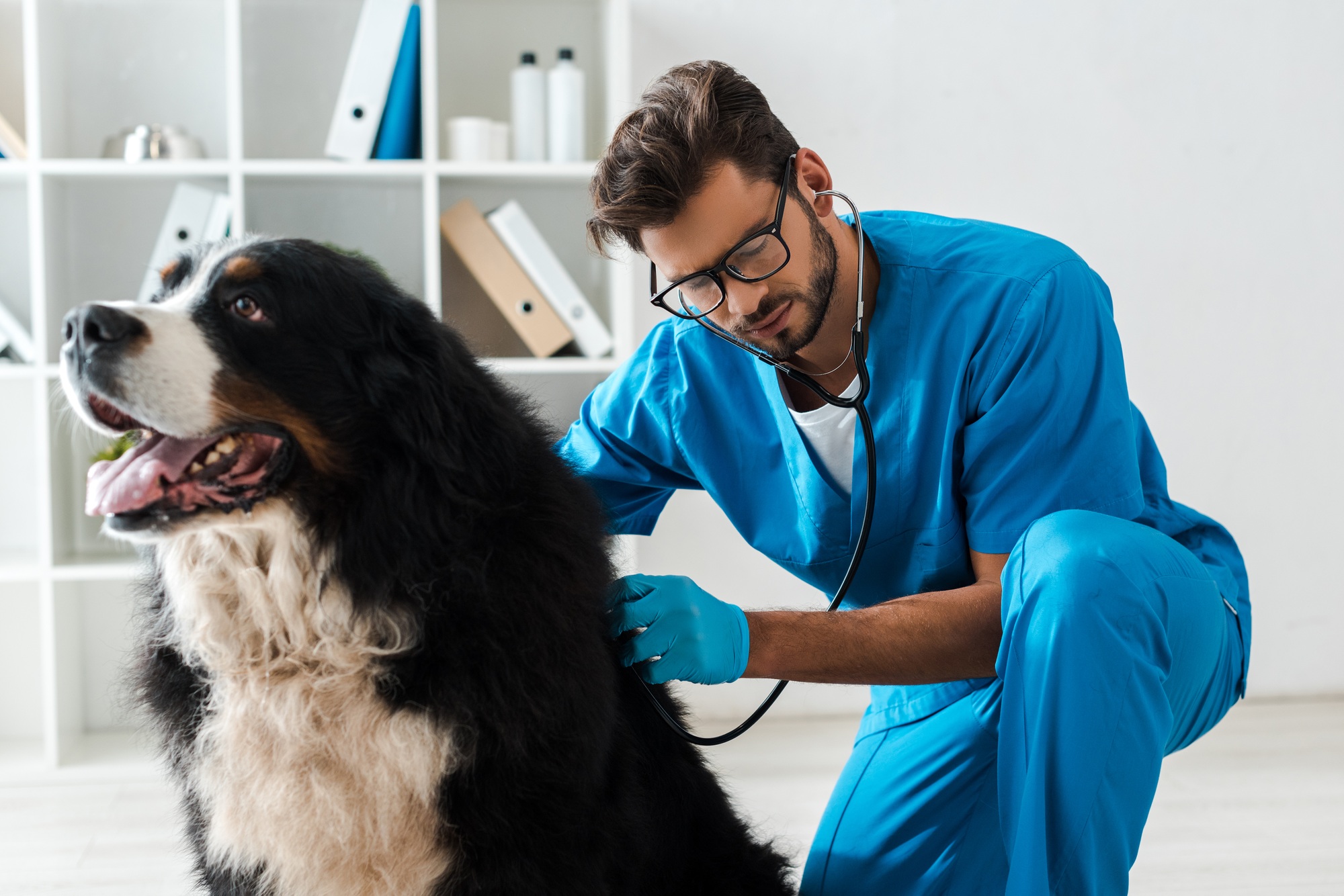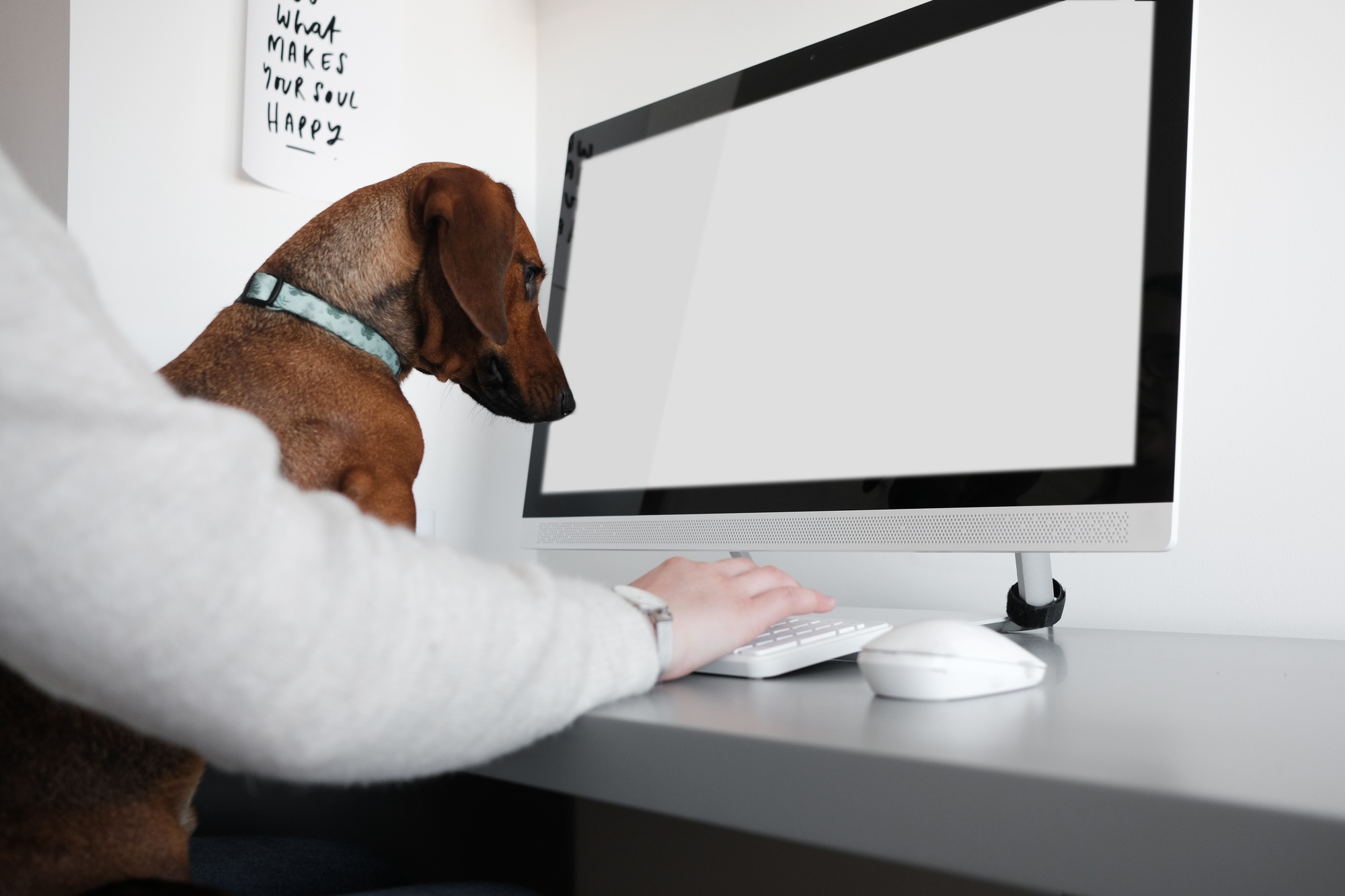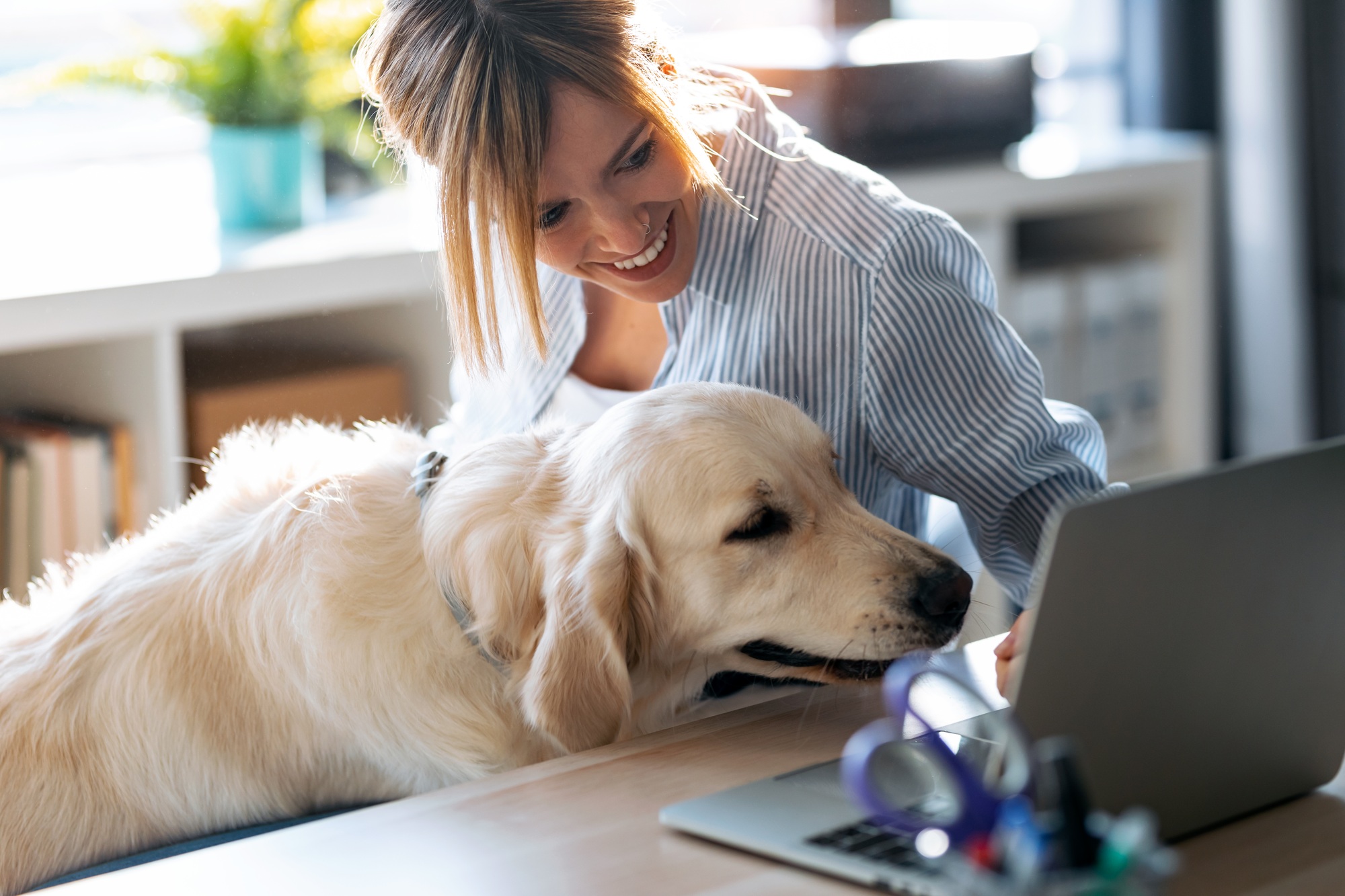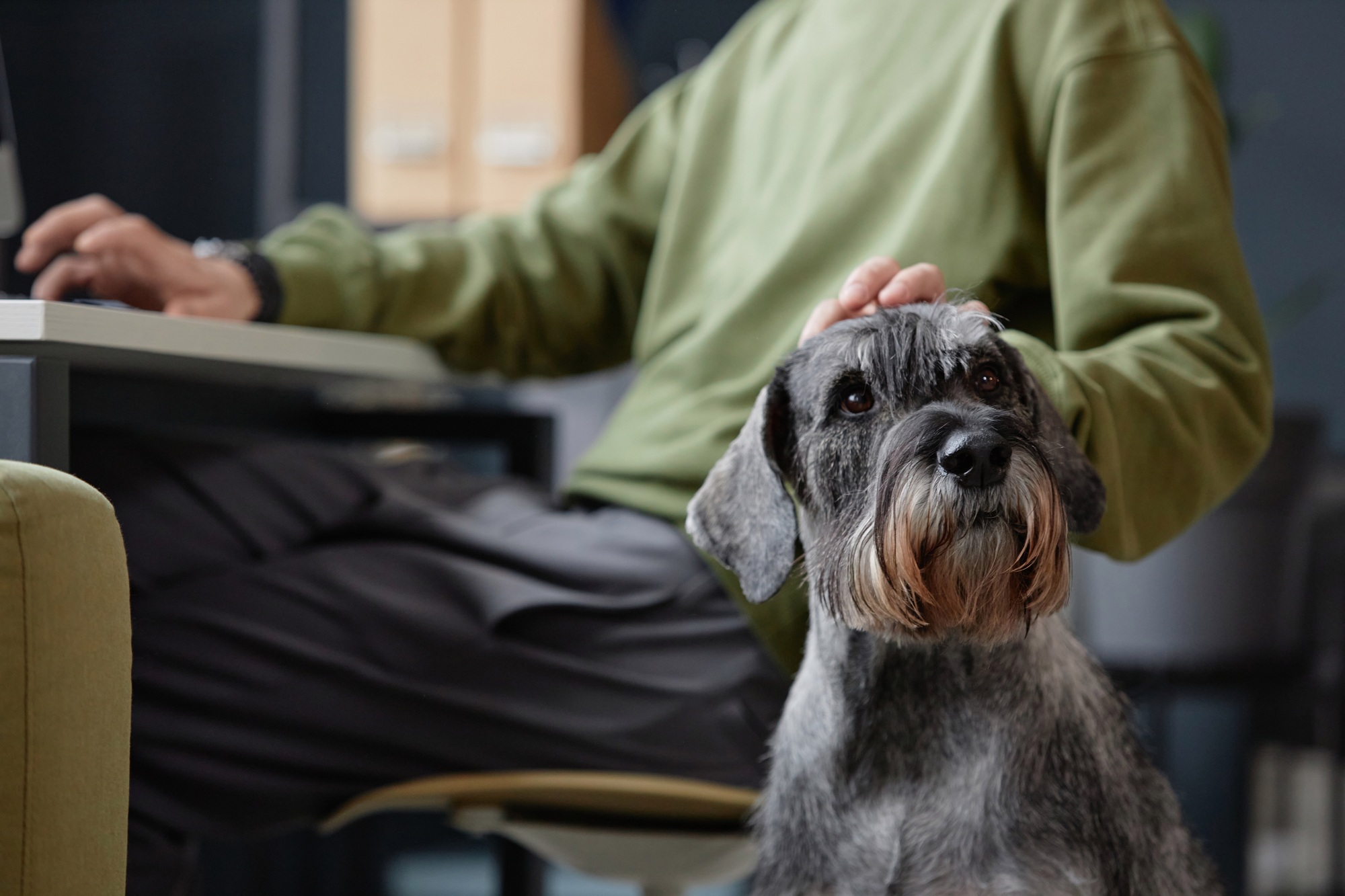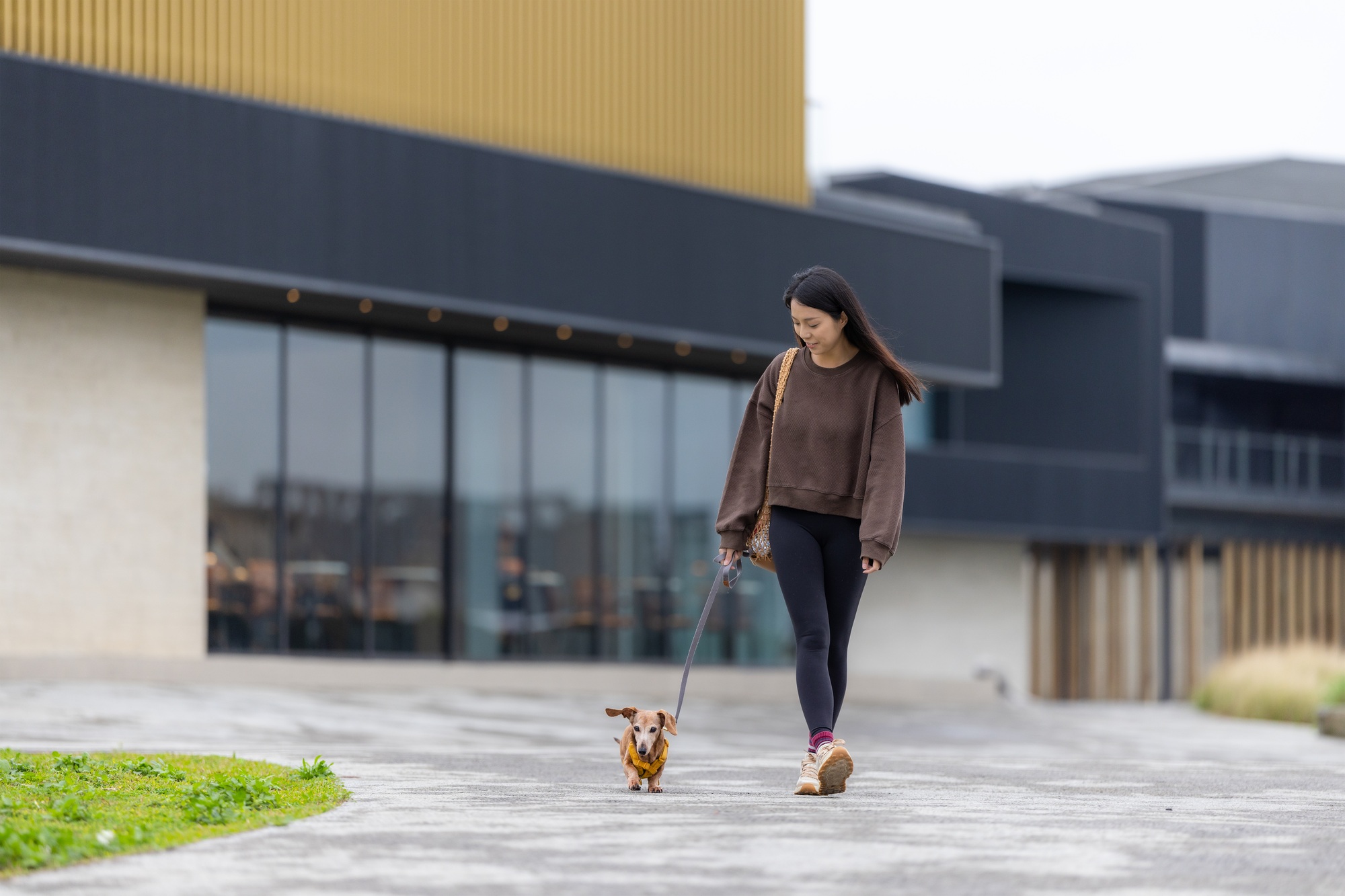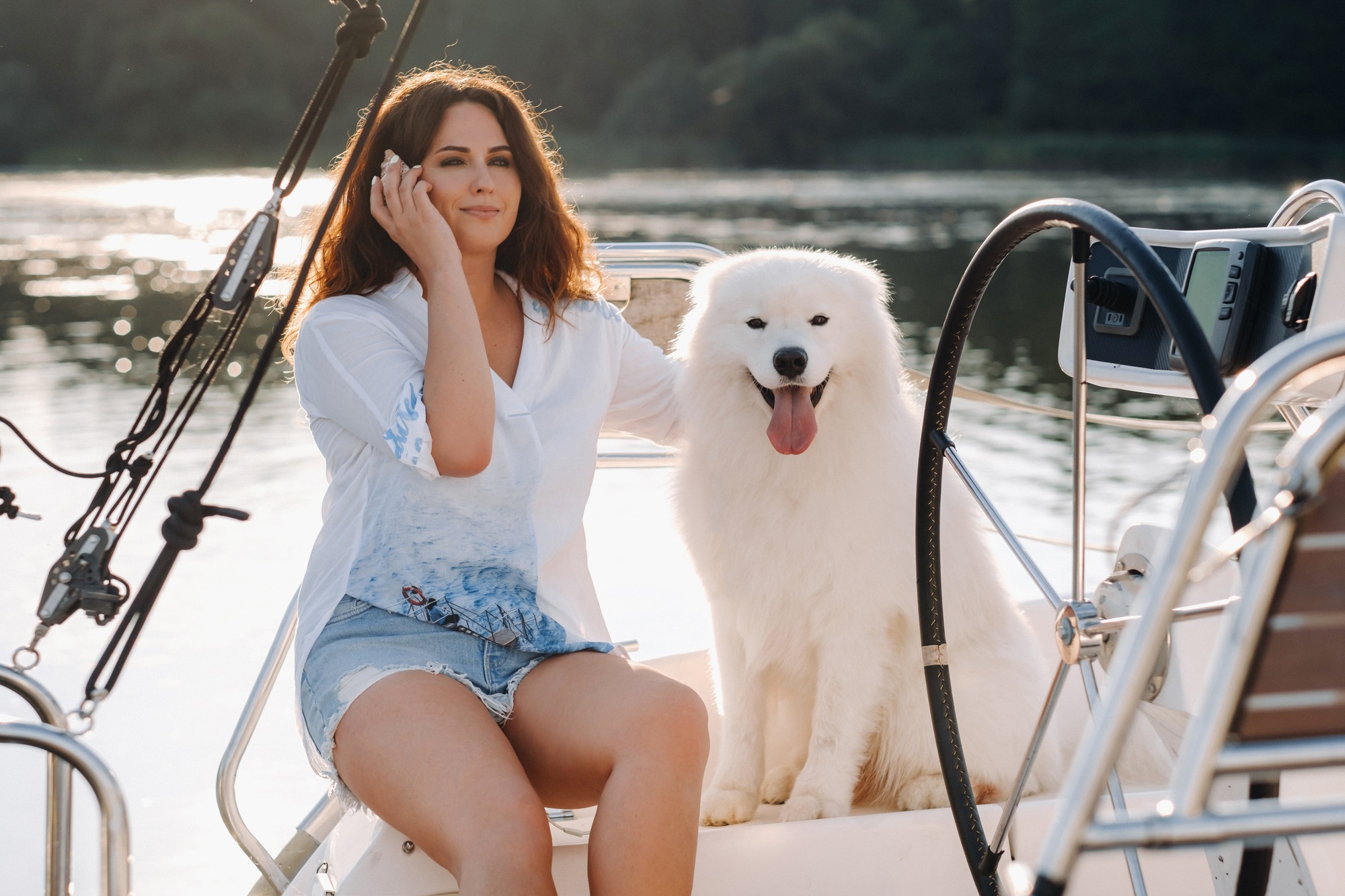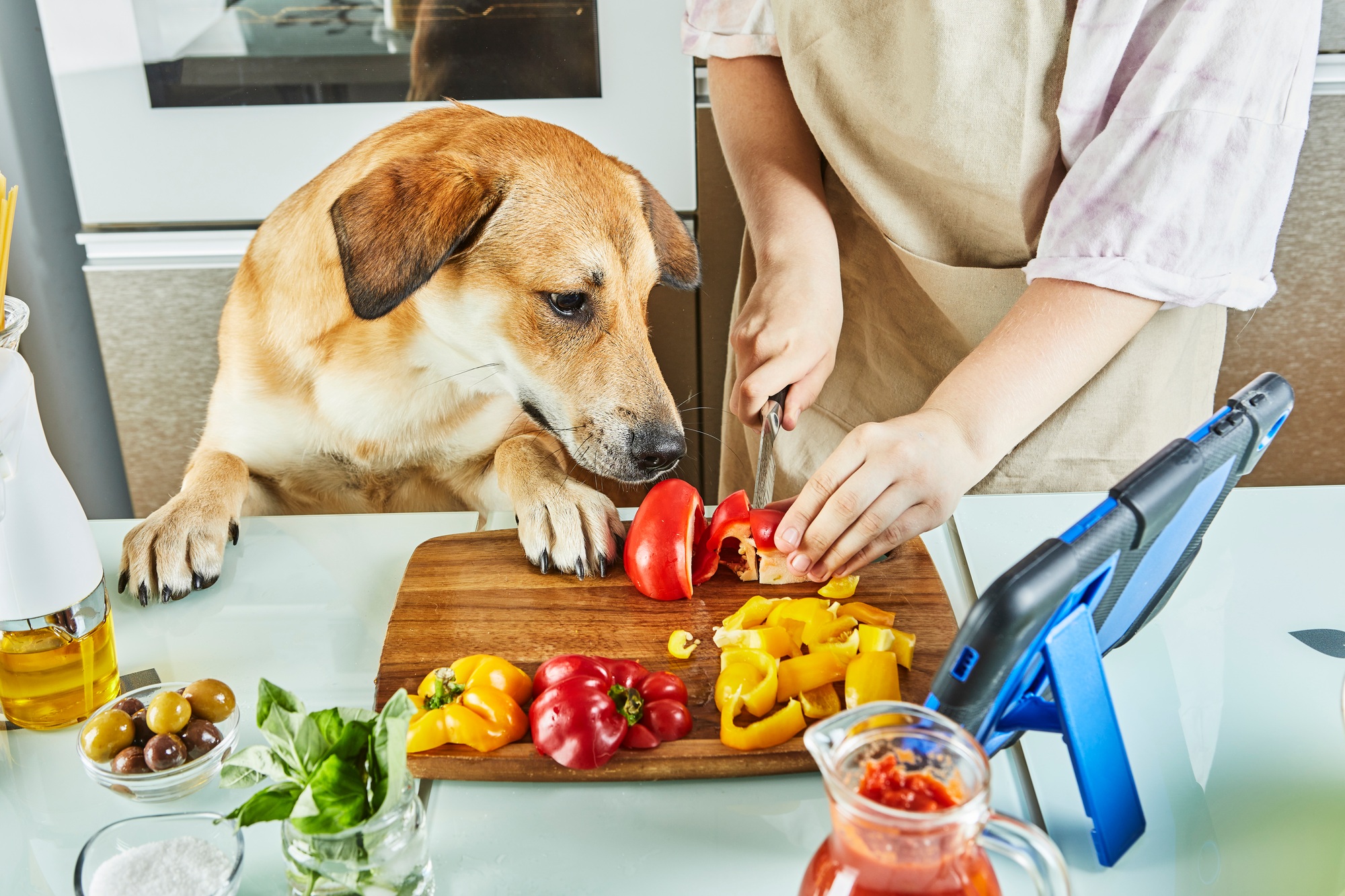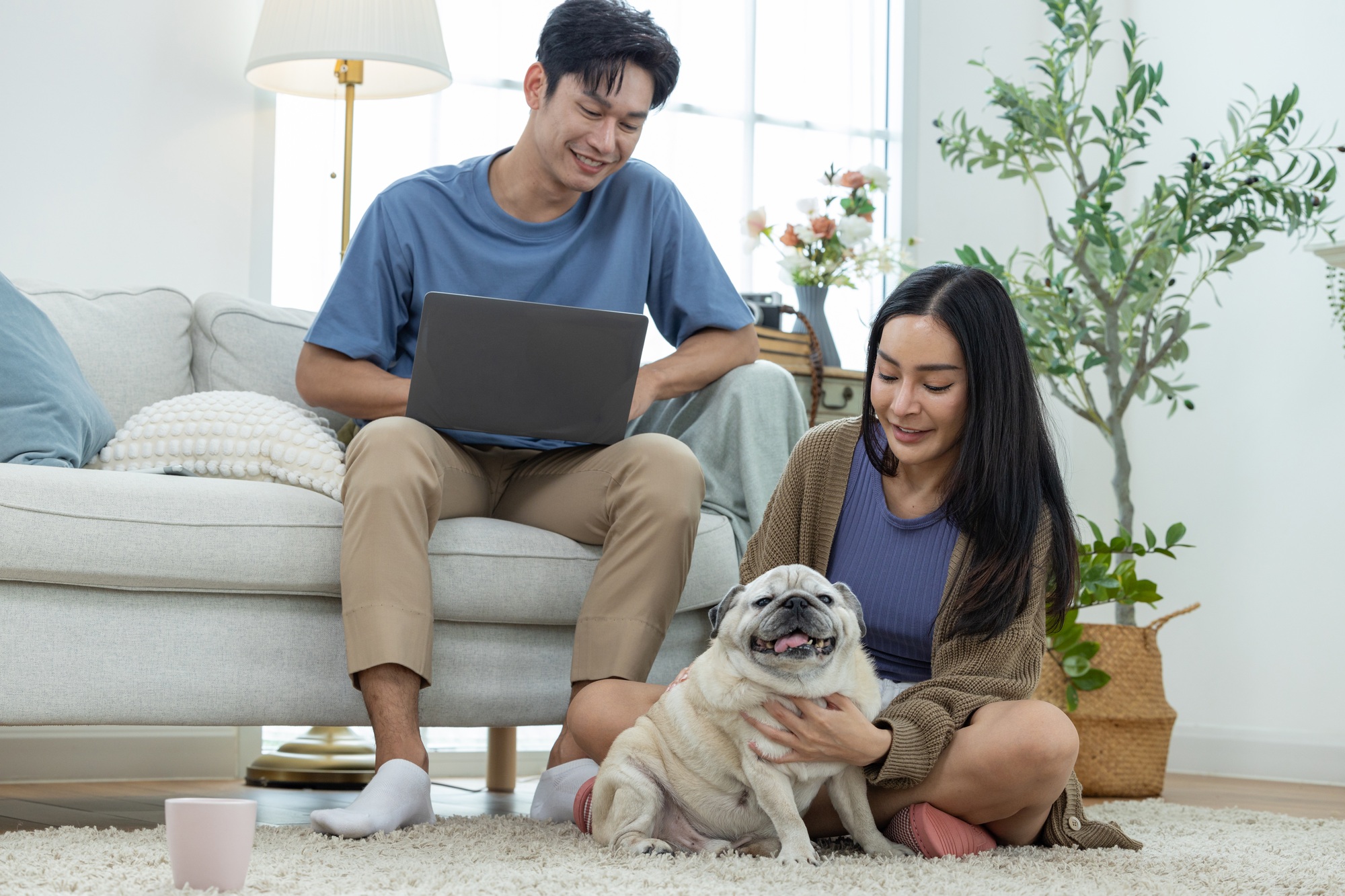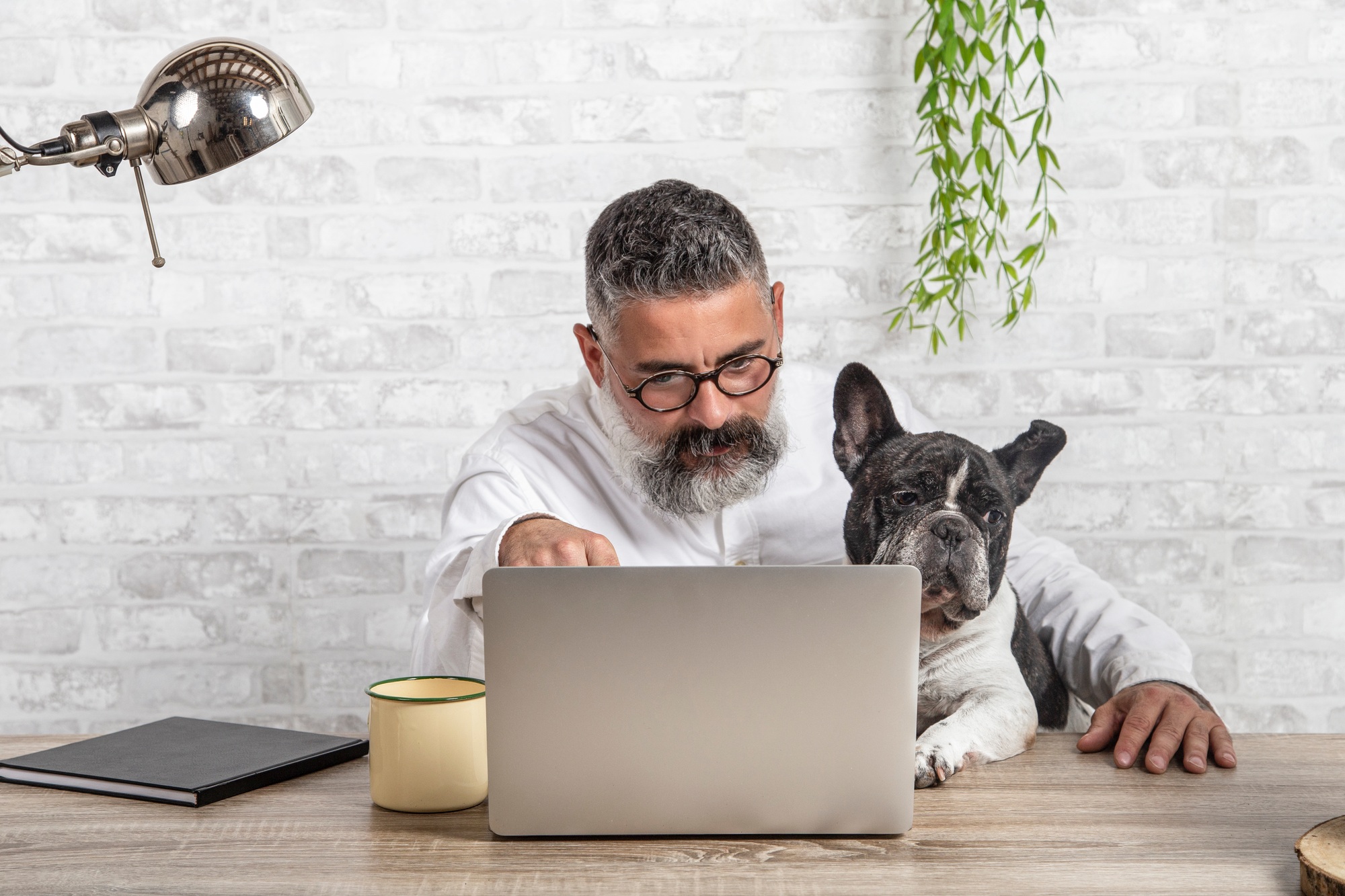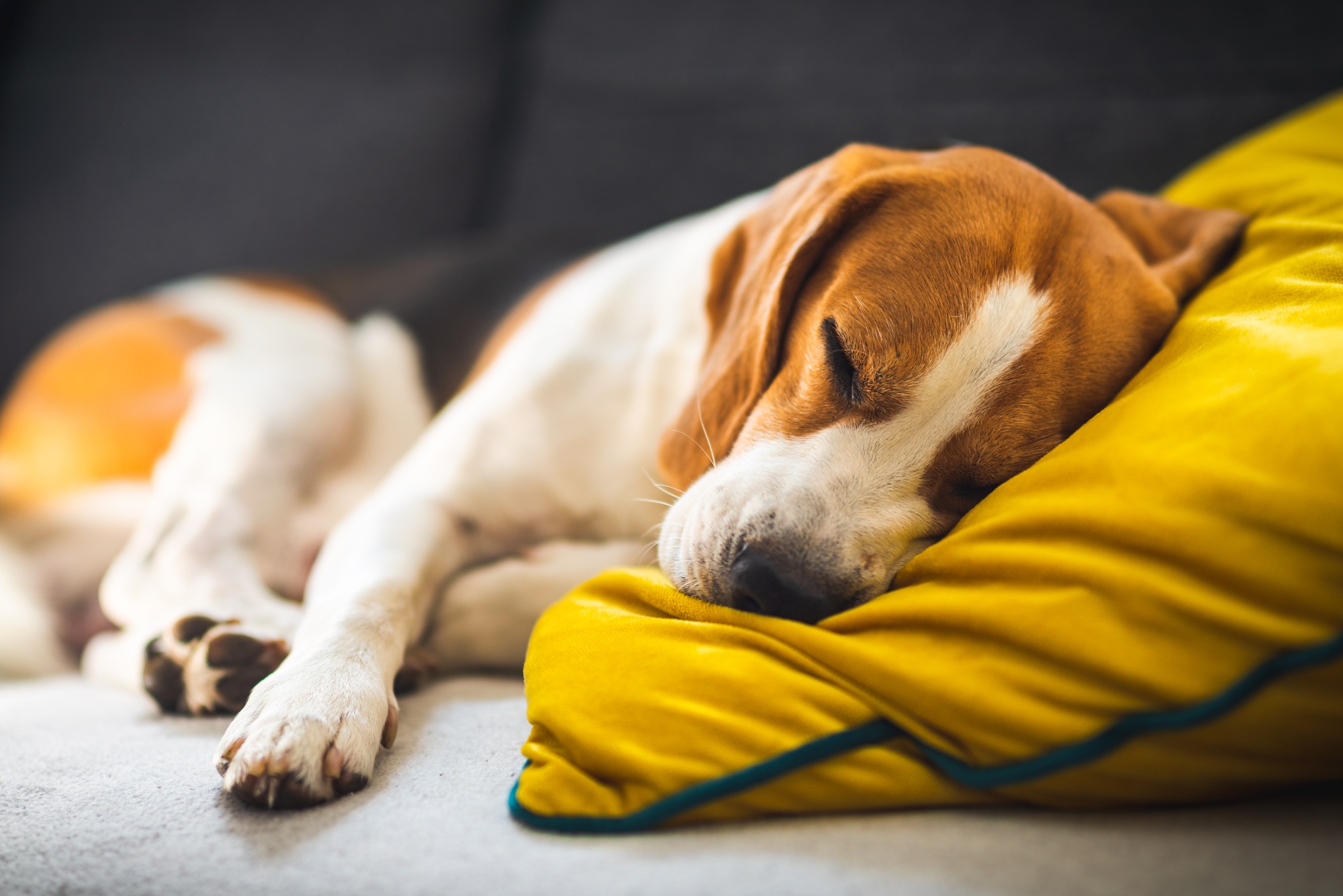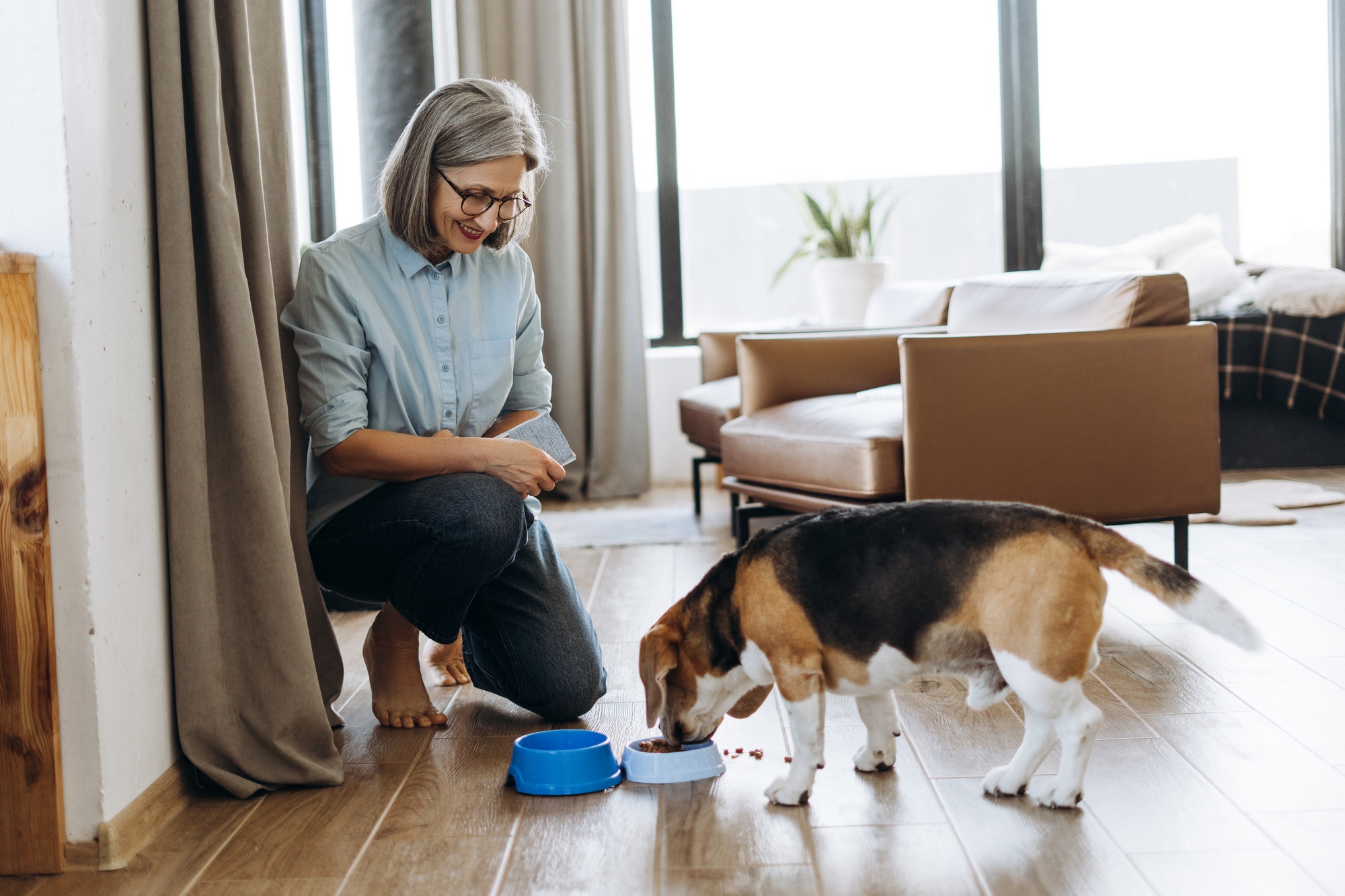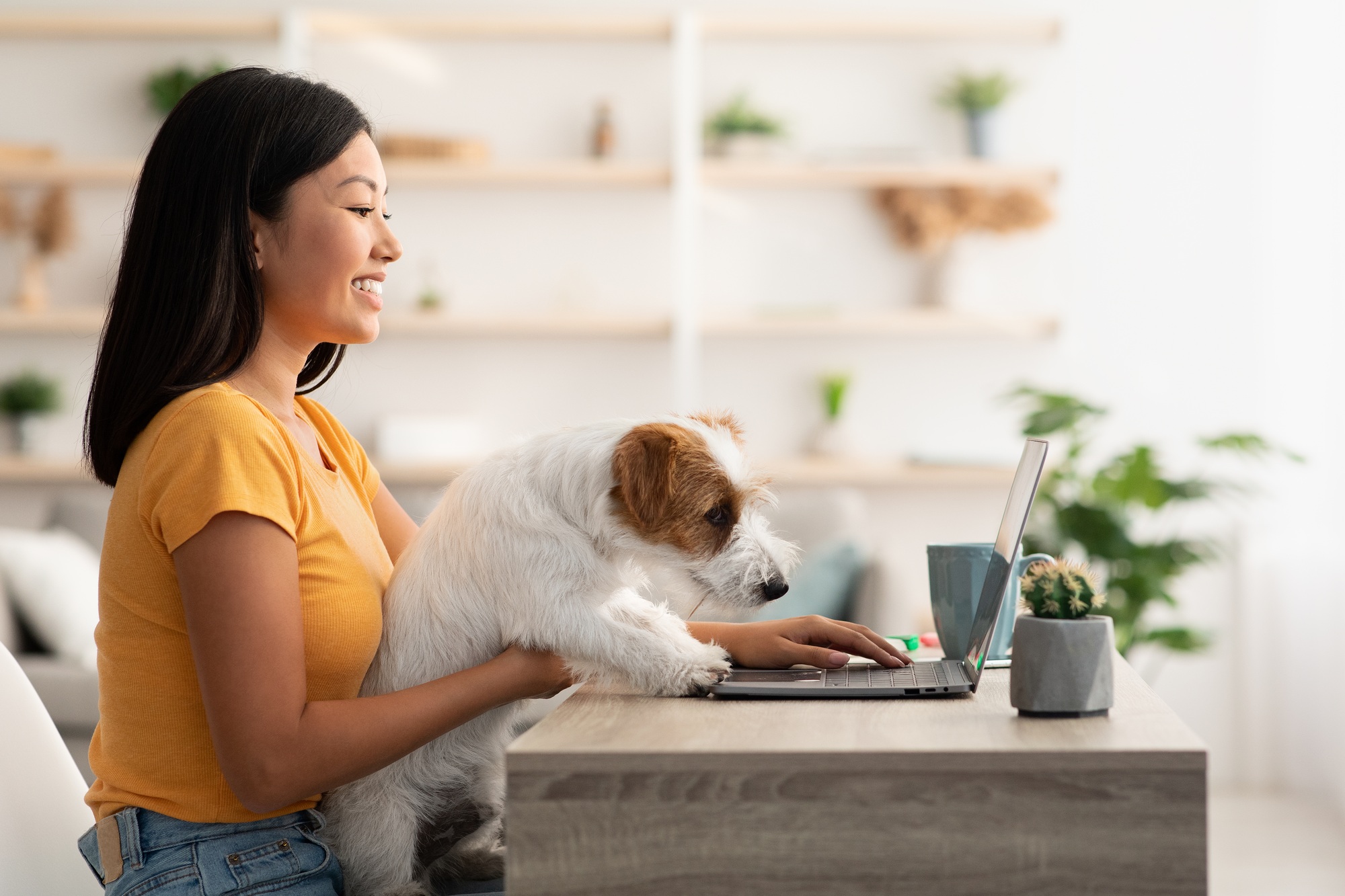
Working from home has its perks—flexible hours, no commute, and the chance to have your dog by your side. But it also comes with challenges, especially if your dog gets restless or anxious while you’re busy. A distracted dog can lead to disrupted work, but with a few strategies in place, you can help your dog stay calm and content while you focus on your tasks.
Here are five simple yet effective ways to keep your dog happy and calm during work hours:
1. Establish a Routine for Your Dog
1.1 Dogs Thrive on Routine
Dogs, just like humans, thrive on structure. If your dog knows when it’s time for a walk, lunch, or a nap, they’ll feel more relaxed and secure throughout the day. Try to stick to a regular schedule for feeding, playtime, and bathroom breaks to provide consistency. When your dog knows what to expect, they are less likely to feel anxious or frustrated.
1.2 Set Boundaries for Work and Play
By creating clear boundaries between work time and playtime, you’ll help your dog understand when they need to relax and when they can get your attention. For instance, set specific times for breaks and stick to them. When it’s time for work, let your dog know that it’s not the right moment for playing or demanding attention.
2. Create a Quiet Space for Your Dog
2.1 Designate a Safe, Comfortable Spot
If your dog tends to follow you around or get into trouble when left alone, creating a designated “dog space” can help. Whether it’s a cozy dog bed near your desk or a quiet crate, a calm, comfortable area can help your dog settle down during work hours. This area should be stocked with your dog’s favorite toys, blankets, and perhaps a calming pheromone diffuser to enhance relaxation.
2.2 Reduce Distractions
Minimize distractions for your dog in this designated space. Ensure the area is free from loud noises, and avoid placing it too close to windows where outside activity might tempt your dog to bark. The goal is to create a peaceful environment where your dog can nap, chew on a toy, or watch the world go by quietly.
3. Keep Your Dog Mentally Stimulated
3.1 Interactive Toys and Puzzles
A bored dog is an anxious dog, and an anxious dog is more likely to act out. Interactive toys or puzzle feeders can keep your dog mentally engaged while you work. These toys challenge your dog’s brain, offering them a fun and rewarding way to spend time while you focus on tasks.
3.2 Rotation of Toys
Dogs can get bored with the same toys every day, so try rotating different toys in and out of their play area. This keeps things fresh and exciting for them, and ensures they remain mentally stimulated. A variety of toys also provides options, so your dog can choose what they feel like engaging with based on their mood.
4. Schedule Regular Breaks for Walks and Playtime
4.1 Physical Activity is Key
Dogs need physical exercise to burn off excess energy. A quick walk or play session during your break can help your dog relax and be calmer for the rest of the day. Schedule a walk every couple of hours to break up your workday and give your dog the exercise they need.
4.2 Playtime to Reconnect
Even a few minutes of tug-of-war or fetch can help your dog release pent-up energy and strengthen your bond. These short play breaks also provide a mental boost for you, recharging both you and your dog to continue working efficiently.
5. Use Calming Aids for Anxiety
5.1 Calming Music or Soundscapes
If your dog suffers from separation anxiety or gets easily startled by loud noises, consider using calming music or soundscapes designed specifically for dogs. These sounds can help mask other noises and provide a soothing background ambiance. There are even special playlists and apps available that use frequencies proven to help relax dogs.
5.2 Pheromone Diffusers and Sprays
Pheromone diffusers, like Adaptil, can help reduce anxiety in dogs by mimicking the calming pheromones that mother dogs produce. These diffusers release a scent that can help your dog feel secure and relaxed. If your dog has trouble adjusting to your work routine, these pheromone-based products can be a game-changer.
Conclusion
By implementing these strategies, you can help keep your dog calm and content while you work from home. With a set routine, a dedicated space, mental stimulation, physical exercise, and a few calming aids, your dog will learn to adjust to your work hours and remain happy and well-behaved. Remember, a calm dog makes for a more productive and focused you, so investing in your dog’s comfort and well-being is a win-win!


